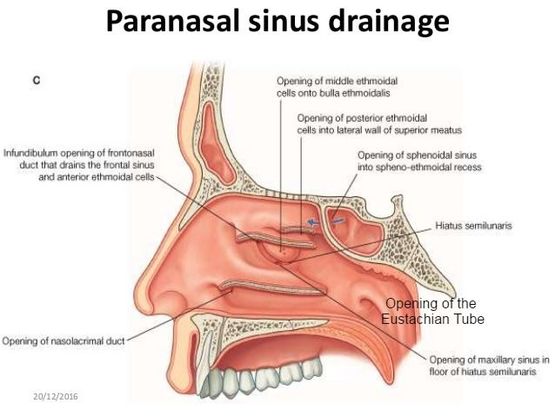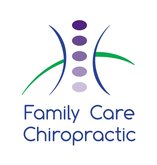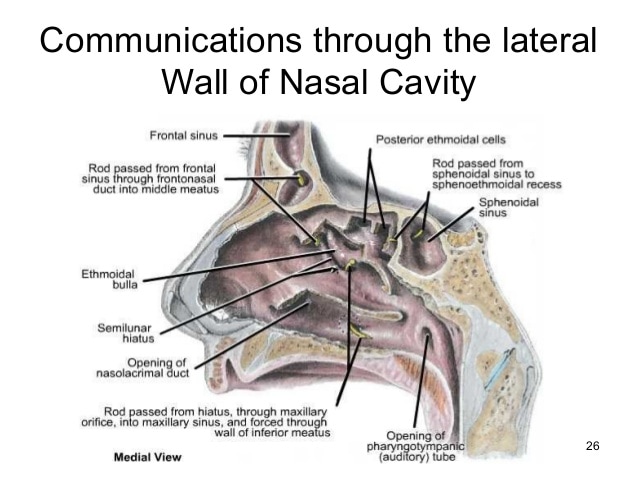 Sinus Problems? Pressure Headaches? Hearing Loss? Mouth Breathing? Bad Breath? Constant Drainage? Chronic Ear Infections? Endonasal Technique addresses many of these common ailments! I first learned of endonasal techniques through my own humbling experience. In November 2016 after experiencing the flu, I lost hearing in my right ear. I thought it would go away on it's own, but it didn't even despite conventional (and by conventional I mean convenient) treatments with antihistamines, decongestants, anti-inflammatories, and even antibiotics. I gave it a month, but lost hope that my body would be able to heal itself. What I learned from that experience, was that my body needed a little help. I sought the care of Dr. Michael Fiscella, a chiropractor who's been treating individuals with ENT for decades, and who coincidently teaches the technique through Logan University School of Chiropractic. ENT or EndoNasal Technique uses a few different applications to open the airways, remove inflamed and exuberant tissue, and decrease pockets of trapped mucous and bacteria. The purpose of the sinus passages is to decrease the weight of the head, and to add turbulence to air flow as it enters the airways. This turbulence aids in our sense of smell. The airways and sinuses are lined with mucous to catch particulate that we don't want getting into our lungs, and to warm and humidify the air before it goes into our lungs. When we are infected with a virus, these membrane linings will become inflamed. They will have increase in mucous production, increased blood flow, become sensitive, and swell, which increases pressure on delicate nerve endings. This is why many times when we are sick, we have sinus pain, pressure, runny noses, discharge, watery eyes, and even bloody discharge when blowing our nose. The body is perfect in its function, but sometimes it needs help. If we aren't doing anything to maintain this open airway, stuff gets stuck. When the virus goes away, the swelling and mucous decreases, but the new tissue and new blood vessels formed doesn't always go away. That mucous? It dries out and thins, but it can also become glue and causes these membranes to stick together. So we are left with more tissue than before, that is stuck together. We have living on us in a symbiotic relationship of certain microbial populations. These populations inhabit our skin, mucous membrane and digestive tracts. When we get sick and have increased blood supply and mucous, this gives this bacteria a perfect space for growth. Not only does it grow with abundance, but as mucous glues membranes together and forms pockets, these bacteria get trapped and their populations can change to a more problematic form that maintains an inflammatory state, or is prone to worsening at the slightest provocation. Endonasal techniques used include a handful of different procedure performed here in the office, and some you can do at home! We are happy to be able to provide our patients with the home care essentials to help them progress more efficiently with the care provided in our office. Some of the procedure we use in the office include:
In the picture above, we can see the intricate detail of the nose, and the nasopharynx. There are three canals (called meatus), through which air passes. In the first (inferior meatus), the nasolacrimal duct opening can be visualized. In the second or middle meatus, the opening of the maxillary sinus can be seen in the diagram. In the third, superior meatus, we have openings to the sphenoid sinus, and the frontal sinus. This superior meatus has the smallest opening, and also houses the cribiform plate of the ethmoid bone, which contains olfactory nerve endings, responsible for olfaction - your sense of smell. The back of these canals leads to the nasopharynx, which then leads to the oropharynx, the back of the throat. On our way from the nasopharynx to the oropharynx, we pass another very important structure - the opening of the Eustachian tube. The Eustachian tube communicates with the inner ear to maintain pressure equilibrium and to drain fluid. If this structure becomes blocked with mucous or inflammatory tissue, its dysfunction can lead to hearing loss, ear pain, fluid discharge from around the ear drum, and what many call "ear infections." 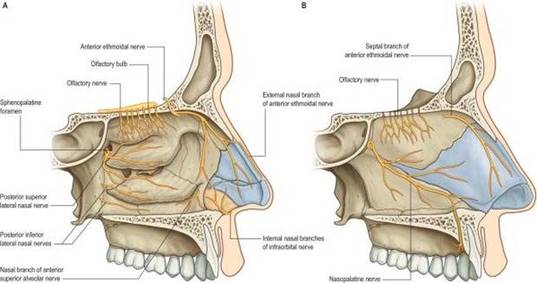 A closer look at the nose, and its surroundings leads us to the nervous tissue. These very delicate structures are highly susceptible to tension and pressure changes caused by inflammation and excess mucous. In the far left, we can see these nerves in relation to the meatus, and directly to the left we see them with the choncha removed. Note the olfactory nerve endings in the superior meatus. It's no wonder we hurt when we are sick! 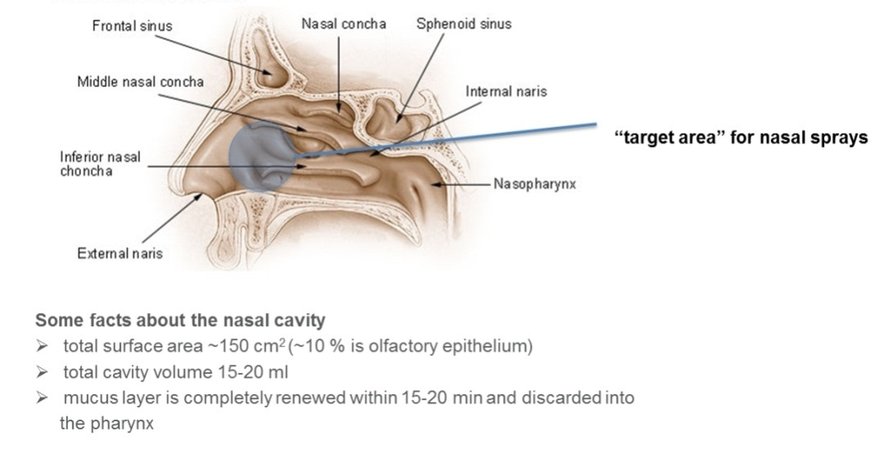 Many individuals will reach for convenient and conventional intervention first when illness strikes.. Products to decrease swelling in nasal and sinus cavities, like decongestants, actually cause vasoconstriction of small capillaries and may be taken systemically in pill form, or in the form of a nasal spray, delivering the medication directly to the area of concern. The vasoconstriction can help with the runny and stuffy nose feeling. Some may resort to products that break up mucous like the ever popular Mucinex, which contains an expectorant Guaifenesin, and its cohort Dextromethorphan, a cough suppressant. Some may use Flonase type products that dispenses a steroid into the nasal cavity. You can see from the picture below that these local sprays, while they do a good job reaching one opening of the nasal cavity, the do a poor job reaching areas of importance like the back of the nasal cavity communicating with the nasopharynx, and the superior meatus, that receives the frontal and sphenoid sinuses. While many of the products can certainly help in the beginning phases of illness, that is where their efficacy is limited. They may work great in the short term, but vary in chronic conditions. Even the label on many of these products tell the consumer to consult a physician if symptoms persist beyond X number of days. But what happens when we do consult a physician? Often times we are told to keep taking them. Interestingly enough, the 2008 Cochrane Collaboration meta-analysis of over-the-counter medicines concluded that there was not enough high-quality clinical data to prove whether it is effective or not. Many physicians will resort to prescribing antibiotics for "sinus infections," but one thing many researchers and doctors know is that the majority of these "infections" are caused by viruses, not bacteria. One thing many individuals don't know is that many antibiotics actually have anti-inflammatory properties, and may even change the way the body responds to inflammation. I know this from experience in veterinary medicine, where we prescribed long term use of doxycycline for inflammatory conditions like lupoid onychodystrophy. While these treatments help with symptoms, they certainly don't get to the root of the problem, and they certainly don't have the same effects over time. ENT does get to the root of the problem, opens the nasal passages to allow for aeration and drainage of sinuses, removes excessive inflammatory tissue, removes mucous, and opens tissues that are stuck together by mucus getting rid of pockets. It allows the body to be more effective at repairing itself. Treatment in the office, and home care at home can aid in the recovery of the body, and help maintain a healthier state. Comments are closed.
|
Location |
HoursMonday: 9 am - 12 pm & 2 pm - 6 pm
Tuesday: By Appointment Only Wednesday: 9 am - 12 pm & 2 pm - 6 pm Thursday: 9 am - 12 pm & 2 pm - 6 pm Friday: 9 am - 12 pm & 2 pm - 6 pm Saturday and Sunday: Closed |
|

